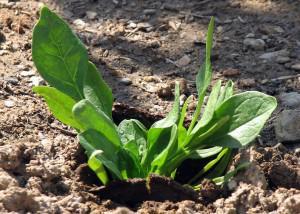 The equation is simple enough, and so is the basic idea. Spinach converts sunlight into chemical energy, as all producers (think green plants, algae, etc) do via photosynthesis. Humans want to convert sunlight into a usable form of energy too. Currently, solar panels are arguably the most popular way this is accomplished. Making solar panels more efficient, by enabling them to convert more sunlight into usable energy (electricity), is the goal.
The equation is simple enough, and so is the basic idea. Spinach converts sunlight into chemical energy, as all producers (think green plants, algae, etc) do via photosynthesis. Humans want to convert sunlight into a usable form of energy too. Currently, solar panels are arguably the most popular way this is accomplished. Making solar panels more efficient, by enabling them to convert more sunlight into usable energy (electricity), is the goal.
Led by Professor David Cliffel, researchers at Vanderbilt University in Nashville, Tennessee have taken the component (a protein called Photosystem 1) in spinach that enables the plant to convert sunlight into usable energy and combined it with silicon, which is the conductive element used in most solar panels.
The Vanderbilt News reports that the researchers’ next step is to build a functioning PS1-silicon solar cell using this new design. Professor Kane Jennings, will work with students who won an award at the EPA’s National Sustainable Design Expo this past spring to develop the model.
[Image source]

